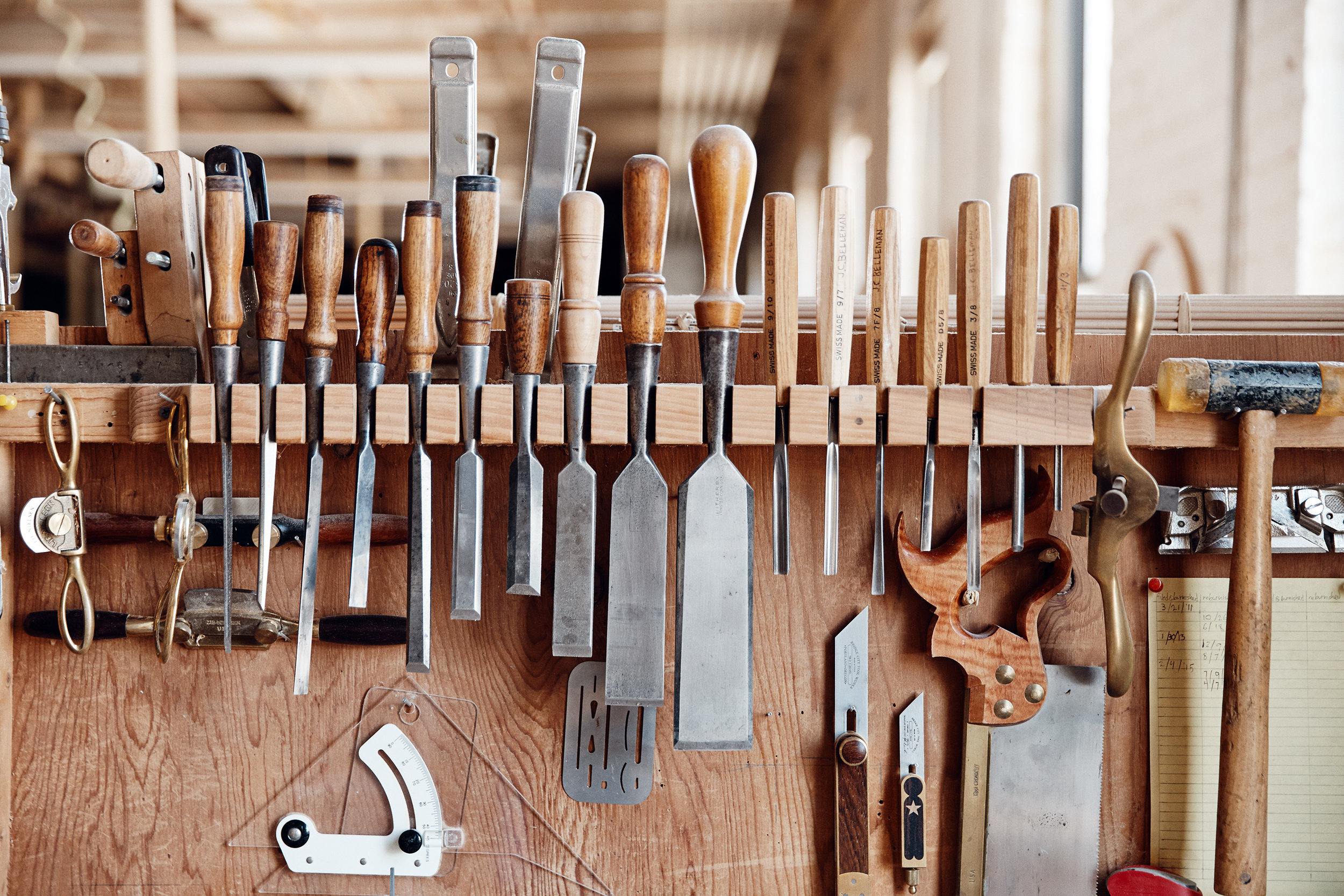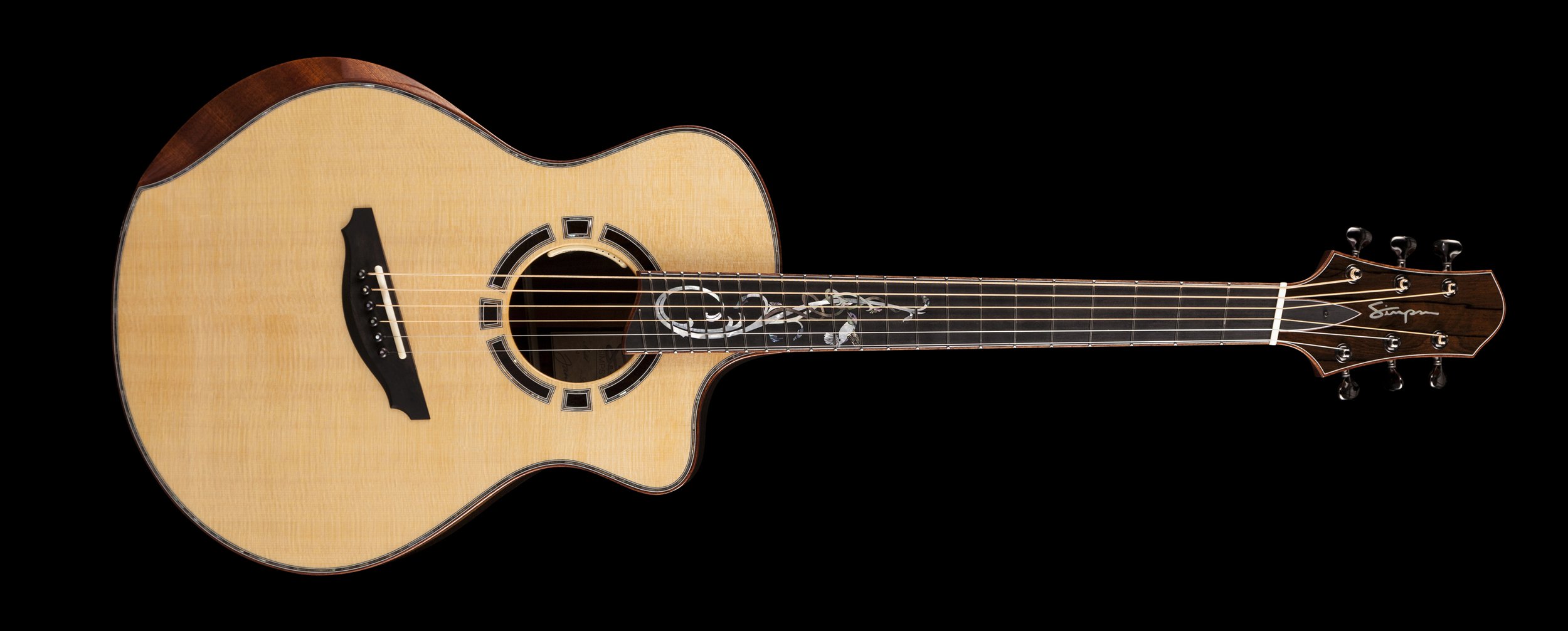
About Me
My love for guitars began at an early age as I listened to my father play Chet Atkins on his Gretsch Country Gentleman. It inspired me to learn to play, and so the journey began. In my teen years, the soaring solos of Rock N’ Roll drew me to the electric guitar. However, by the age of 20, a new appreciation for the acoustic guitar was born and with it, a wild new dream to build them. I have always loved creating fine things and possessed an entrepreneurial spirit. I knew I wanted to have my own business, and I wanted it to be original and bespoke. One fateful day, I happened upon a magazine article detailing the intricacies of custom, handmade, acoustic guitars and that’s all it took. The fact that the sound quality was a product of not only the type of wood used, but also of the design and skill of the builder, seemed the most romantic idea ever! What could be better than playing a beautiful guitar? Playing a masterfully crafted instrument brought to life by the work of one’s own hands. I knew from the moment that I put down that magazine, I would become a Luthier. I fervently began consuming every scrap of information I could find on building acoustic guitars and starting with the sale of my favorite Ibanez guitar, I began saving over the next couple of years to fund my first build. In 1996, after a year in the making, my first guitar was born and the rest is history.
About My Guitars
My passion is to create stunning, precision crafted, acoustic works of art. I am a perfectionist to a fault and continually push the boundaries of my own skill and creativity in pursuit of the highest level of craftsmanship. I embrace tradition where tradition proves best while actively employing innovation and technology in order to meet the demands of today’s progressive players. My guitars are built for serious players who want more than what a factory made guitar can offer.
Materials
Quality materials are foundational to great acoustic guitars. Whether it’s soundboards, braces, tuners, or kerfing, I carefully select materials for their superior aesthetic, structural and tonal qualities. No expense is spared. In addition, all tonewoods used in my guitars have been properly dried and acclimated to my shop environment prior to building to ensure optimal stability and performance.
Elevated Fretboard
The primary function of the elevated fretboard is to maintain a straight, stable playing surface along its entire length for the entire life of the instrument. Over time, all guitars will settle in somewhat due to constant string tension. The neck pulls upward toward the bridge and the top of the guitar does the same respectively toward the nut. The string action may rise beyond a point in which the saddle can be lowered anymore and will require a neck reset to restore the original action. Traditionally, guitar necks have been glued to the body which presents at least two problems. One, it’s not an easy process to separate the neck from the body and can be potentially damaging to the guitar itself. Second, when the neck angle is reset and the fretboard is again glued to the top, there is a resulting “fall-off” past the 12th or 14th fret in which the fretboard angle is different in respect to the rest of it. The benefit of the elevated fretboard is that the neck is not glued on at any point and from the 14th fret on it actually hovers free over the top enabling it to maintain its straightness the entire length of the neck. If a neck reset is ever needed on a Simpson guitar, the neck can easily be taken off in a matter of minutes without any fear of damage to the guitar. The heel of the neck can then be sanded to a new angle and merely bolted back to the body with no resulting “fall-off.”
Asymmetrical Back Bracing
This bracing system is used on the back of my guitars to create a broader range of sympathetic overtones to the high and mid frequencies that are produced from the soundboard. The braces fan out from the treble side creating a varied and broader pitch response across the tonal spectrum of the back.
Armrest Bevel
Many strides have been made in recent years within the lutherie community to make guitars more ergonomic and comfortable to play. If you’ve ever played an acoustic guitar for an extended period of time, you’ve probably noticed that the strumming arm can become uncomfortable and even numb as it rests on the top edge of the guitar body. The armrest bevel provides relief with a soft, sloped edge that lessens fatigue & discomfort while adding a great aesthetic look.
Life Time Warranty – Terms and Conditions
JASON SIMPSON warrants solely to the original purchaser of [a] Simpson guitar that the instrument purchased shall be free from defects in materials and workmanship under normal use for as long as the instrument is owned by the original purchaser, and until the ownership of the instrument is transferred to another. This Limited Warranty does not apply [to]: (a) wear or breakage of frets or strings, or other normal wear and tear of the instrument or its parts; (b) asserted defects caused by modification, misuse, or abuse, or improper maintenance of the instrument; (c) asserted defects involving subjective personal likes or judgments; (d) asserted defects caused by accident or exposure to extremes of temperature or humidity that cause harm to the instruments.









